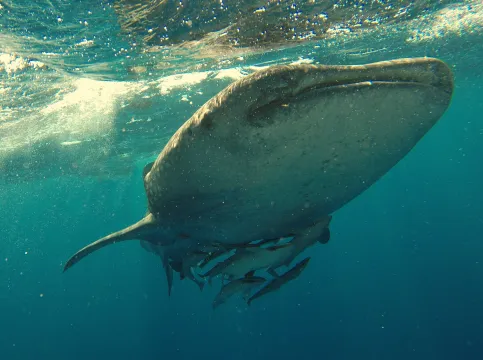Active banners: 0 Visible banners: 0
Ocean Odyssey Lessons
Provided by: NOAA |Published on: July 10, 2023
Lesson Plans
2345
Synopsis
- This resource includes eight lesson plans for elementary classrooms, where students will learn about ocean animals and their habitats, ocean currents, food webs in the ocean, whale migrations, fishing, and sustainability.
- A preview of the Ocean Odyssey movie is provided, but seeing the movie is not required for the lessons.

Subjects: Science, Social Studies
Authors: NOAA
Region: Global
Languages: English
Teaching Materials
Positives
- This set of lessons is engaging, colorful, and includes a wide-ranging scope of ocean topics.
- Each lesson includes all of the printable materials needed and a facilitation guide that makes implementing the lessons easy.
Additional Prerequisites
- Other than the printable materials included, the materials needed to complete all of the lessons include tape, plain paper, writing materials, coloring materials, a map of your nearest ocean area, a projector or screen, paper straws, baking dishes or pie pans, water, coarse ground pepper, index cards or sticky notes, ice, hot water, clear containers, food coloring, a compass or compass app, small objects (coins, paperclips), yarn, chart paper, and rulers.
Differentiation
- Cross-curricular connections can be made in language arts classes working on scientific reading and writing, social studies classes that are studying maps, or health classes that are considering how the oceans impact human health.
- While this resource was created in conjunction with the movie "Ocean Odyssey", you do not need to view the movie for the lessons to work. Viewing the movie may be a fun extension.
- These lessons can be completed all together over the course of one or two weeks or they can be completed individually.
- For older elementary students, some of the activities can be set up as classroom stations to be completed in a rotation.
Scientist Notes
Teaching Tips
Standards
Resource Type and Format
All resources can be used for your educational purposes with proper attribution to the content provider.



